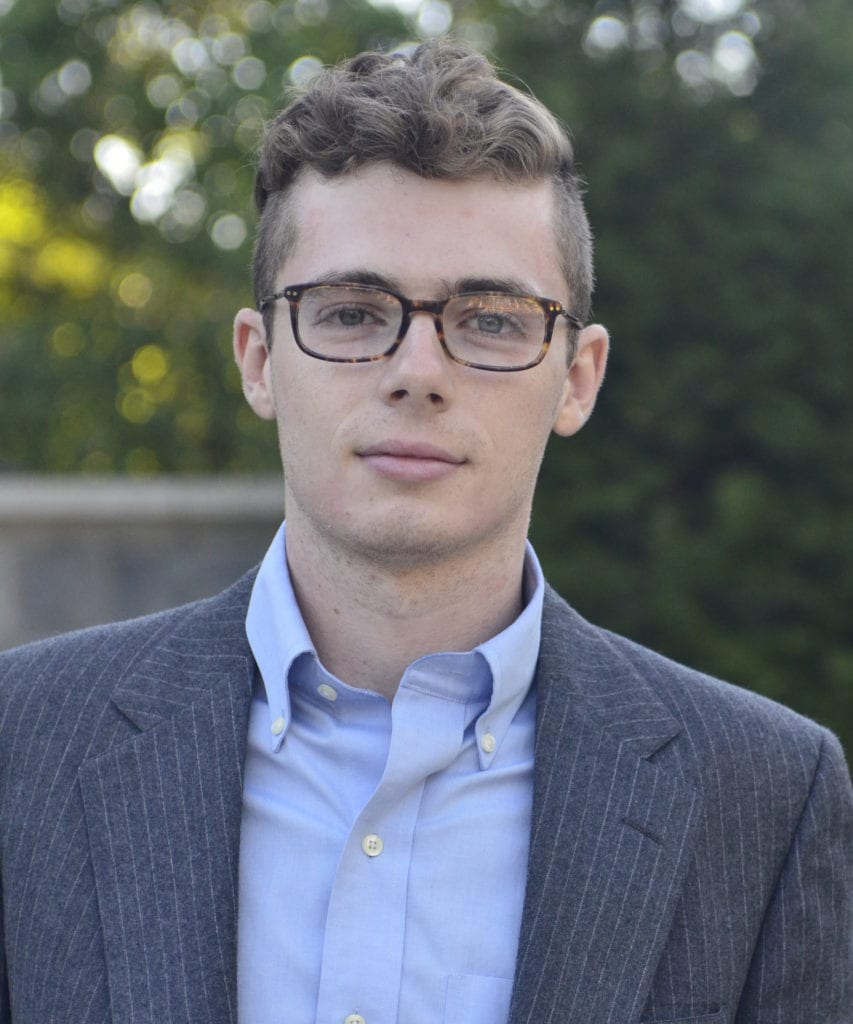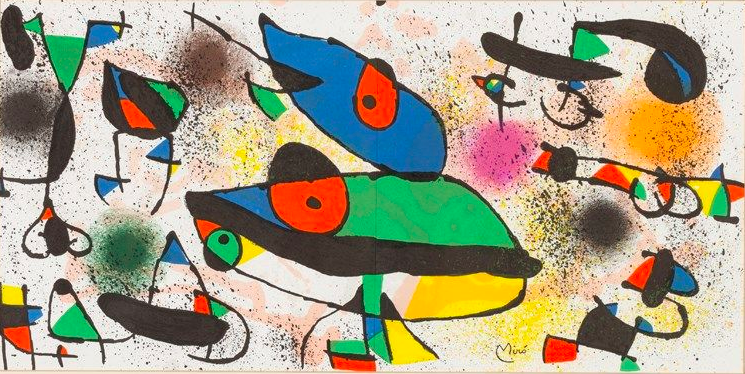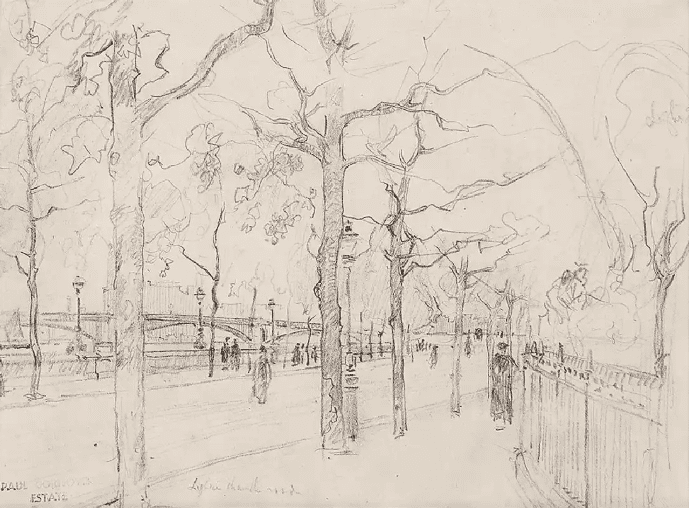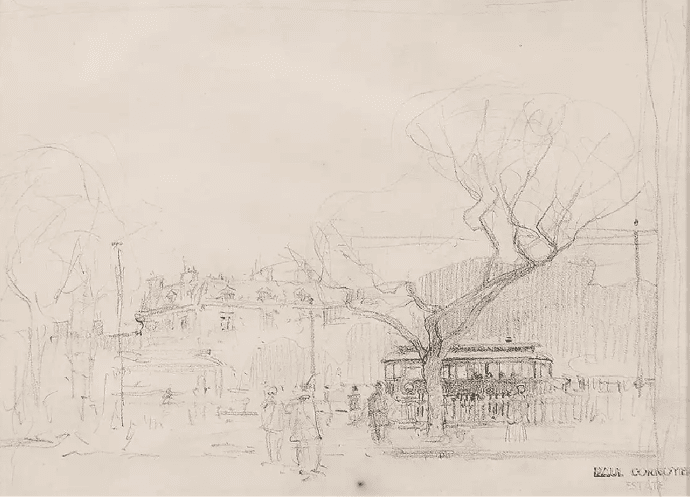
Brad Firchow ’19
During the recent exhibition OUMA in Retrospect: Celebrating 25 Years, a work in the Oglethorpe University Museum of Art’s permanent collection by artist Paul Cornoyer hung next to another one of his works, New York Trolley, a piece that belongs to senior Brad Firchow.
Firchow, who serves as student body president, began collecting art when he was 13—mostly furniture pieces from local artists in Kentucky and West Virginia. But, it wasn’t until he came to Oglethorpe that he became serious about collecting.

Sculptures II, Joan Miró, part of Brad Firchow’s personal art collection
“The spring of my sophomore year here at Oglethorpe, a semester after taking Art and Culture with Dr. Jeffrey Collins, I stumbled upon a 1974 lithograph entitled Sculptures II by Joan Miró at an estate sale in Brookhaven. I gave a low-ball offer, and the person in charge of the sale accepted it after a bit of haggling back and forth,” said Firchow. “I bought the lithograph on a Sunday, and on Monday I met with the Oglethorpe University Museum of Art’s curator, John Tilford, to verify that the work was real.”
It was the beginning of a connection between OUMA and Firchow.
“As I became more involved with the museum through my friendship with John, my friendship with (then OUMA intern) Larissa Randall ’18, and my seat on the OUMA Board as student body president, I started becoming more intimately appreciative of our museum’s collection,” he said.

London Street Scene, Paul Cornoyer
He was inspired by a few pieces in the permanent collection in particular.
“I was immediately enamored of two oils by Paul Cornoyer donated last summer by Ms. Carrie Lee Jacobs Henderson. Beyond being a gracious donor to OUMA and a fervent supporter of the arts, she is the granddaughter of Thornwell Jacobs, who re-founded Oglethorpe University here in Brookhaven. Her support of OUMA inspired me to collect art more seriously, and I am indebted to her for opening my world to and all the intellectual stimulation and intrigue that comes with collecting.”
Firchow hoped to one day own a work by Cornoyer, but never dreamed it could become a reality as a college student. Tilford recommended looking into acquiring one of Cornoyer’s works on paper, which are significantly less expensive than his other artwork.
“With that advice, whenever I took breaks from studying for the MCAT, I was browsing catalogs from auction houses around the world, trying to find a proverbial needle in a haystack. By mid-June, I happened to stumble upon not one needle but two at an auction in Chicago. It was my first time ever attempting to bid at an auction, and I was both elated and terrified to be taking this step as a collector. When I ended up making the highest bid, I jumped up, screamed, and probably looked like I was off my rocker. The lot was comprised of two finely-executed pencil drawings by Cornoyer from his time in New York City and London between 1901-1910.”
Tilford asked Firchow if he would be willing to loan one piece, New York Trolley, to the museum for its summer exhibit, and he happily obliged.

New York Trolley, Paul Cornoyer
“The most magical and humbling part of lending the drawing to the exhibition was that John chose to hang my drawing next to the small Cornoyer painting of a scene outside Gloucester, Massachusetts,” Firchow said. “This is one of the very pieces that inspired me to collect Cornoyer, and to have it hang on the same wall as my drawing is a feeling quite unlike any other I have experienced ever before in my life.”
Firchow has even encouraged a few friends to take up collecting.
“Collecting is as much a scholarly activity as it is a joyride, and that is one of the many reasons I and so many others fall in love with it. A wise person gave me some sage advice about collecting: collect what you love, never for investment. If it appreciates in value, fantastic; if not, you will always have something you treasure.”

